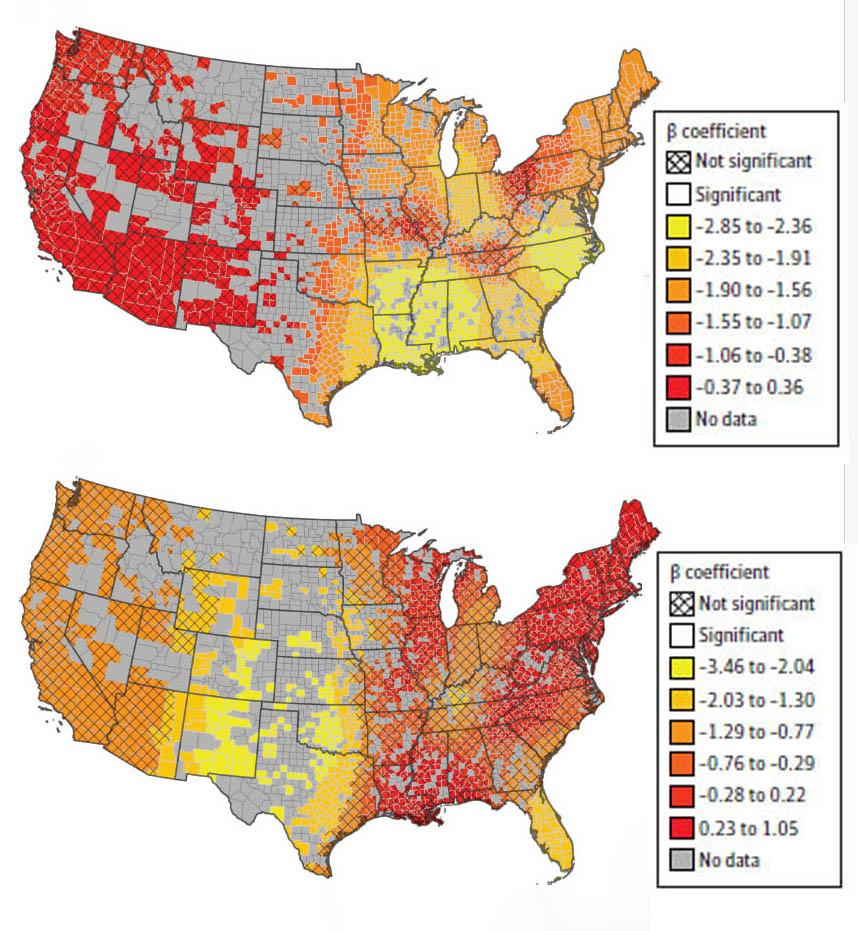Study by UMD researchers and colleagues shows how location matters in breast cancer outcomes.
Researchers from the University of Maryland with collaborators from George Mason University identified patterns of breast cancer survival that linked social and environmental factors with geographic regions across the country. Their study revealed that limited access to healthy food was correlated with lower breast cancer survival rates in the East and Southeast, but not in the West or Southwest. Meanwhile, opportunities for exercise were a more significant determinant of breast cancer survival in the Southwest than they were elsewhere in the country. Location has enough influence that in some places, certain risks were associated with high mortality, while adjacent towns and neighborhoods had similar risks but lower mortality.
One of the most significant aspects of the study was that the researchers did not have to conduct multiple, location-based surveys to find these patterns. Instead, their innovative approach used methods from geographical sciences to analyze large-scale national data sets on human health, environmental conditions and social and demographic information.
The research paper was published online in JAMA Network on September 14, 2023.
“The exciting take-away from this study is that by looking at these large national data sets in this novel way, we were able to take into account these spatially specific hotspots and identify where the effects of different risk factors were most significant,” said Travis Gallo, assistant professor in the Department of Environmental Science and Technology at UMD and co-author of the study. “With this extra information, you could design very culturally specific interventions to reduce breast cancer mortality.”
Breast cancer is the top cause of cancer-related deaths in women in the U.S. Many of the risk factors that contribute to breast cancer deaths are well known, like access to health care, healthy foods and adequate exercise. But these risk factors do not explain why breast cancer death rates differ in various parts of the country. That is likely because traditional research methods assume the significance of each risk factor is uniform across the country.
Gallo and his team suspected the story was more complicated. As a quantitative ecologist, Gallo applied similar techniques he uses for studying animals to tease out regionally specific information and make inferences about how factors influencing mortality rates varied in each region down to the county level.
He and his colleagues found that some risk factors, like obesity and limited access to mammogram screenings, are consistently associated with high breast cancer mortality rates regardless of geographical location. But other risk factors, like food deserts and pollution were more significant risk factors in some areas than others.
The results of this study can help public health officials to more effectively target programing dollars and messaging around specific risk factors in areas they are likely to have the most impact. For example, understanding that obesity is a strong risk factor across the country, public health officials could more effectively reduce obesity and overall risk of breast cancer by addressing the different risk factors that contribute to obesity in each region.

In the map at the top, yellow indicates a high association between food environment and breast cancer mortality in southern and eastern states, and low correlation in western states, while exercise opportunities factored in mortality rates in the central region as shown in yellow on the lower map.
Because food deserts are more strongly associated with breast cancer mortality rates in majority Black communities in the east and southeast, efforts to increase access to healthy food and public health messages around food could be designed to be culturally relevant to those communities. Likewise, exercise opportunities are more relevant to survival rates in the Southwest where larger communities of Indigenous and Hispanic populations live, so programs to reduce breast cancer mortality in these regions can be designed to appeal to Native American and Hispanic communities.
------
Dan Herrera, a graduate assistant in the Department of Environmental Science and Technology, is also a co-author of this study, which was led by and conducted in collaboration with researchers from George Mason University.